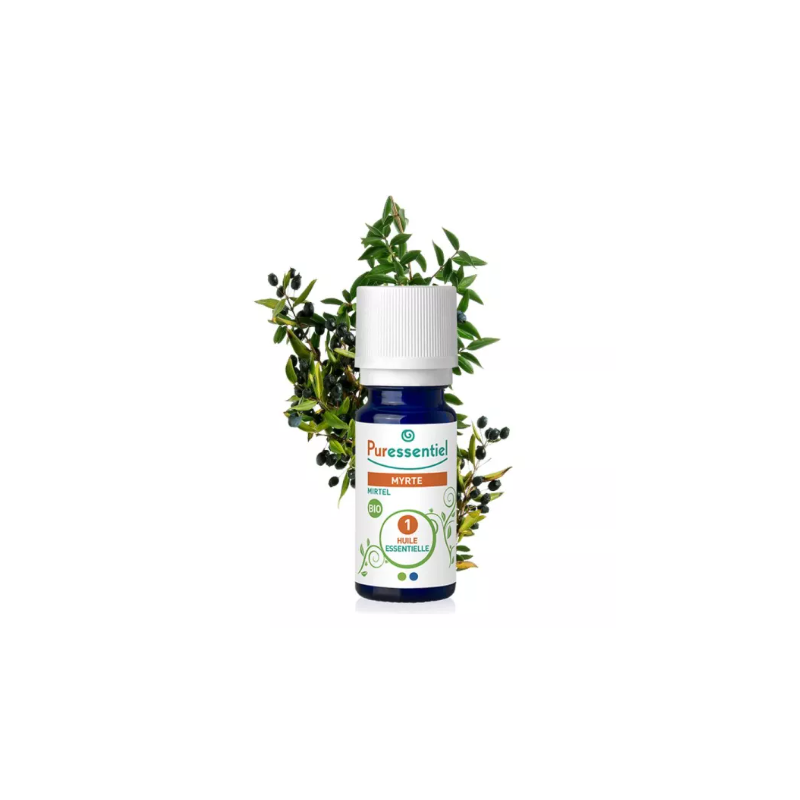The smell of myrtle essential oil is fresh and resinous. Originally from the Mediterranean basin, the myrtle is a shrub that grows wild in the dry and sunny maquis, in Corsica, Morocco, Tunisia and the Balkans. During the harvest, two-thirds of the leaves must be left on the tree, in order to maintain its productivity.
Indications of Myrtle essential oil
Bacterial bronchitis with cough and mucous membrane irritations. Cold, bronchitis, cough, anti-septic bronchitis, coughing up, antispasmodic.
Botanical information of Myrtle essential oil
Myrtus communis
Botanical family: Myrtaceae Producing organ: branches, leaves Chemotype: 1.8 cineole, myrtenyl acetate, alpha pinene
Botanical details of Myrtle essential oil
The Myrtle is a shrub with evergreen and tough foliage. Its blueish black berries are edible and liked by birds. It is widespread in the Mediterranean where the berries are used to make liqueurs. The Myrtle grows in dry soil and tolerates dryness well. It cannot cope with too much water.
Usage of Myrtle essential oil
Diffusion +++, Bath +++, Massage +++, Orally -
Example of use of Myrtle essential oil
Massage“Respiratory” oil:10 drops of Myrtle EO + 15 drops of niaouli EO + 10 drops of ravintsara EO + 15 drops of mountain pine EO in 15ml of sweet almond vegetable oil. At night, apply 5ml of this warm mixture onto the thorax. Cover with a cotton pad to optimise the effect of the essential oil.
Diffusion-Cold, Bronchitis, Cough:15 drops of myrtle EO + 10 drops of eucalyptus globulus EO + 10 drops of cypress EO + 15 drops of mountain pine EO.
Precautions of use for Myrtle essential oil
Contains eucalyptol. Not recommended for pregnant or breast feeding women or children under 8 years of age.




